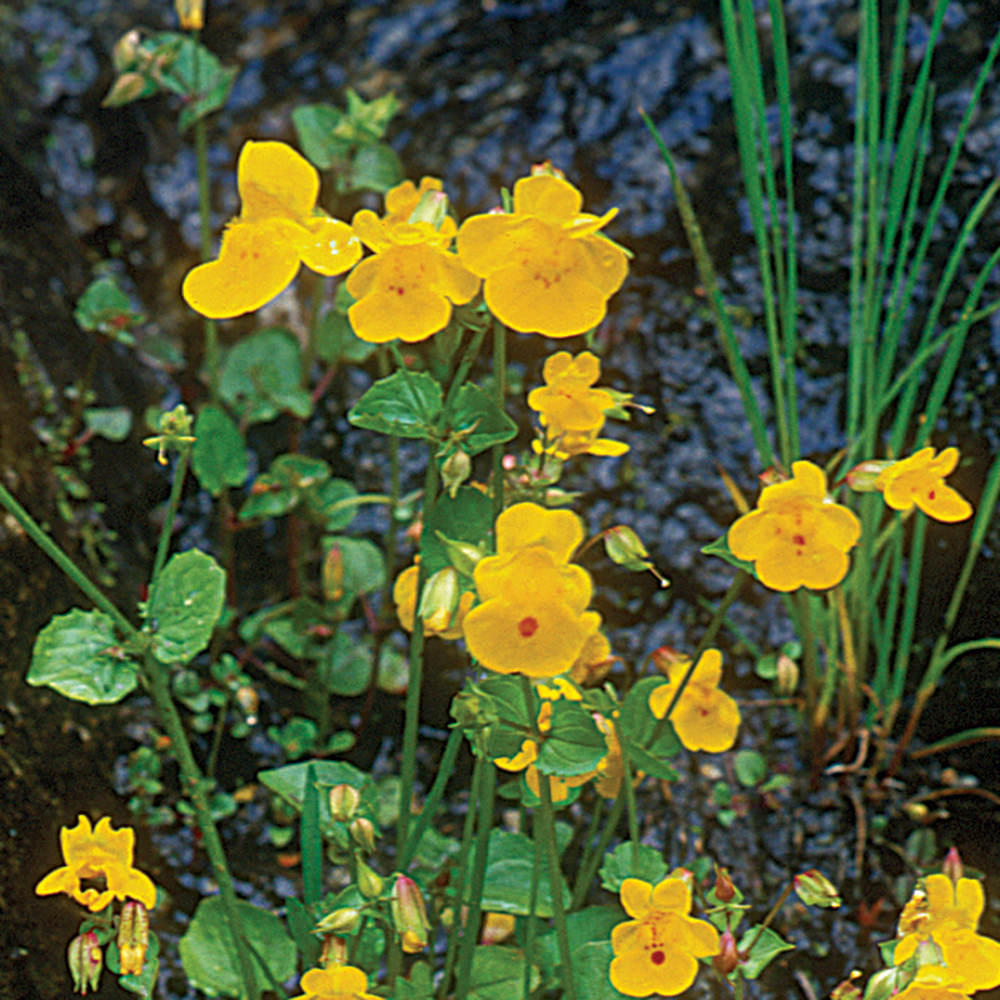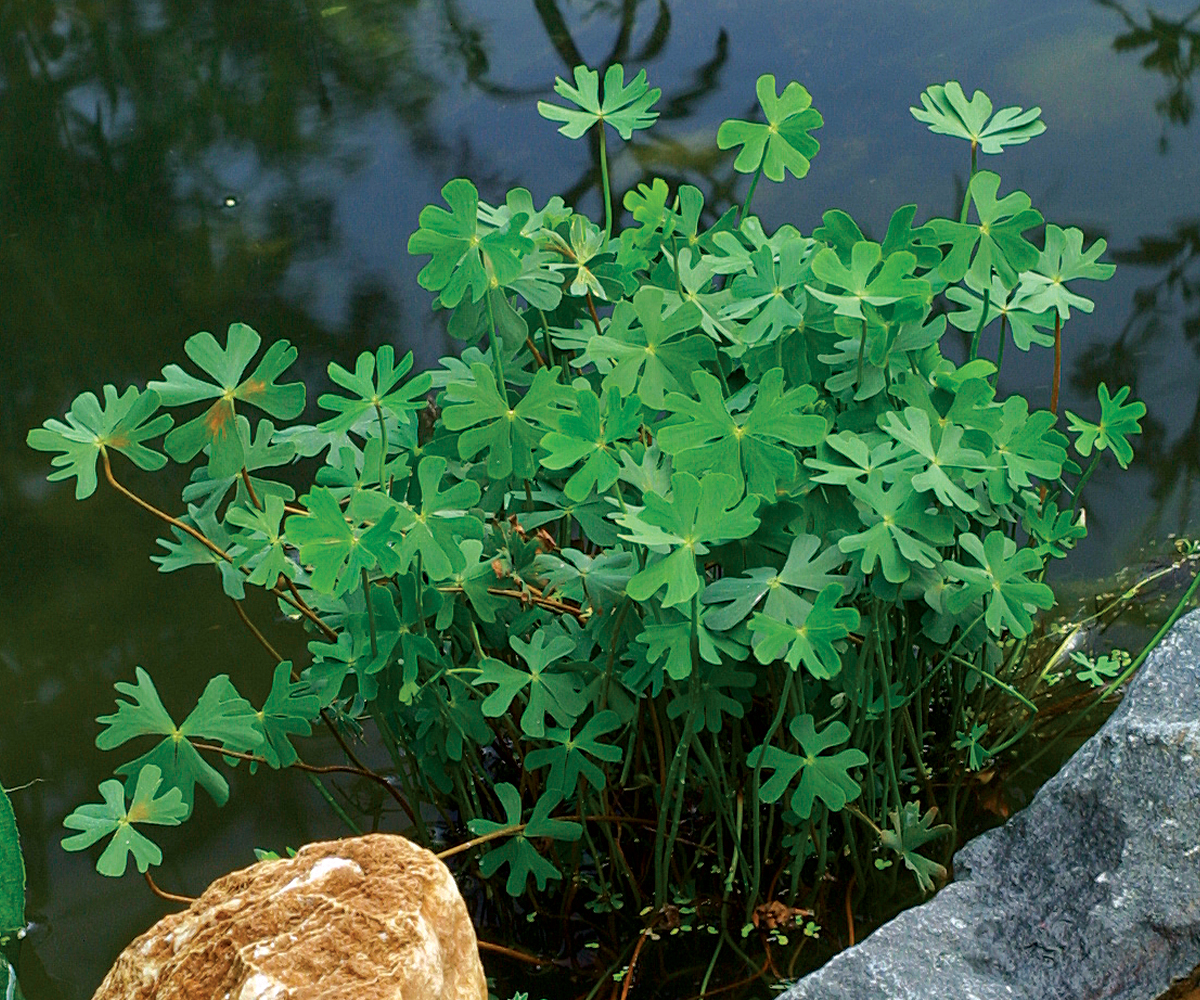How to Make a Water Garden in a Pot
To create a compelling water feature, just take a container that can hold water and add the right plants

Few things are certain when it comes to gardening: A sun-loving plant will do poorly in shade. An agave won’t survive a Minnesota winter. Deer will eat your hostas. Here is another one: Water improves a garden. I’m not talking about giving your plants a drink (although that is true). I’m referring to ponds and water features.
Watch a video to learn how to make your own water fountain in a pot!
Water in the garden never goes unnoticed. Adding a water feature to a garden room or patio instantly creates a peaceful feeling and says that there is something special and distinct about the place. Water brings the light down from the sky and reflects it back to us. It heightens plants’ textures and enhances their forms. Best of all, it opens up a new world of plants for us to grow. But who wants to excavate for a pond or run electricity for a pump and filter? Adding a water feature to your garden usually takes time, money, and effort.
The solution is a water container. Find any object that can hold water and fill it up. You have just created an environment that will do all the wonderful things water does for a garden. Once you’ve set up a container, all that is left is the fun part: choosing the plants.
As with any container combination, water containers need a mixture of upright, bushy, and creeping plants to look balanced. The plants I have chosen to write about fit into these categories and can be combined with one another to create beautiful compositions. Each plant also has a stature and habit that work well in a container environment. These plants are available at any local nursery with a decent water gardening section, and they shouldn’t cost any more than other perennials. Most are easily overwintered indoors, or you can grow them as annuals, tossing them onto the compost pile at season’s end.
While these plants are perfect for your first foray into the world of water-garden plants, don’t limit yourself to this small group. There is a wide palette of water plants for you to explore.
Water clover covers the feet of taller plants
Marsilea spp.
Zones: 6–11
Light: Full sun to full shade
Size: ¼ to 6 inches tall with an indeterminate spread
Water depth: Up to 4 inches above the crown
The aptly named water clover has attractive foliage that insinuates itself in and around the other plants in the container. As an added feature, the leaves close at night and resemble little butterflies sleeping on the water. This plant grows in sun or shade and is easy to care for, requiring only occasional feeding and thinning. Don’t worry about overthinning—it doesn’t mind a touch of ruthlessness when you cut it back. Many water clovers are hardy to Zone 6, but all are easy to grow indoors if need be. Because they grow from creeping rhizomes, any piece that has roots and a leaf will grow.
‘Crushed Ice’ arrowhead makes a splash
Sagittaria graminea ‘Crushed Ice’
Zones: 5–11
Light: Full sun to light shade
Size: 1 foot tall and wide
Water depth: Up to 1 inch above the crown
The bold foliage and clean white flowers of arrowheads (Sagittaria spp. and cvs., Zones 5–11) make them great plants for water containers. Easy to grow in sun to light shade, they are rampant runners and can fill a container. Growing them in a 1-gallon pot will keep them in check and also make the plant look fuller. Arrowheads are heavy feeders. To keep them green, growing, and flowering in a small container, give them frequent doses of a fertilizer designed for water plants.
Arrowheads vary widely in height and leaf shape. I like ‘Crushed Ice’ arrowhead for a container because it is a great bloomer and gets only 1 foot tall and 1 foot wide. Best of all are the slender, variegated leaves that are in proportion to a container but still provide visual interest. Where the summers get hot and humid, ‘Crushed Ice’ will benefit from afternoon shade.
Dwarf parrot feather carpets the water surface
Myriophyllum papillosum var. pulcherrima
Zones: 6–11
Light: Full sun to full shade
Size: 4 inches high and an indefinite spread
Water depth: As deep as you can go without submerging the entire plant
The common parrot feather (Myriophyllum aquaticum*, Zones 6–11) is a mainstay of water gardens and with good reason. Its soft, furry plumes are small but plentiful, and the fine texture makes an impact. Dwarf parrot feather is a more refined relative of the common species and is perfect for water containers because it gets only half as tall (4 inches) as its ubiquitous cousin.
Dwarf parrot feather needs only a small, 4-inch-diameter pot in which to grow, but it will spread over the surface of the water, hiding the pots of other plants and spilling over the edge of the container. Because it will float, dwarf parrot feather can be grown in deep water; just don’t submerge it. This plant grows easily from stem cuttings. Simply take a bunch of it and add it to another pot in the container, or clip it to the side of the container. Overwintering cuttings in the house is just as easy.
Yellow monkey flower blooms all summer

Mimulus guttatus and cvs., syn. M. langsdorfii
Zones: 6–9
Light: Partial sun to full shade
Size: Up to 10 inches tall and wide
Water depth: Up to the crown or 1 inch above in summer
Yellow monkey flower is a summer bloomer that likes a little shade. Reaching anywhere from 2 to 10 inches tall, it subtly weaves its way among other plants in the container, adding a touch of color. If you deadhead and feed this plant steadily throughout the summer, it will keep producing 1½-inch-long yellow flowers. It does best in shallow, moving water, especially when the water temperature rises above 65°F. If you don’t have a pump, yellow monkey flower will still do fine.
Dwarf umbrella grass adds a graceful touch to a container
Cyperus alternifolius and cvs., syn. C. involucratus
Zones: 9–11
Light: Partial sun to full shade
Size: 2 to 4 feet tall and wide
Water depth: Up to 4 inches above the crown
Umbrella grasses usually grow up to 6 feet tall, but several dwarf cultivars are perfect for water containers. Their upright habit and long, narrow leaves add height and grace to a composition. ‘Gracilis’ retains the elegance of its taller cousins while reaching only 2 feet high and 1 foot wide. ‘Variegatus’ is as tall as ‘Gracilis’ but is twice as wide. As its name suggests, ‘Variegatus’ has striking green-and-white variegated leaves, but they often suddenly revert to all green. ‘Nanus’, which grows from 2 to 4 feet tall, is the biggest of the umbrella grasses I would recommend for a container.
Dwarf umbrella grasses are naturally yellow-green. The more sun they get, the more yellow their leaves become, especially if you don’t feed the plant enough. If you want to be sure a plant stays green, give it morning sun and fertilize it regularly. Since dwarf umbrella grasses get tall, grow them in pots that are at least 1 gallon or larger so that they don’t fall over. If the plant is not hardy in your area, bring it indoors during the colder months and set it in a tray of water.
Corkscrew rush has busy foliage to draw the eye
Juncus effusus ‘Spiralis’
Zones: 6–9
Light: Full sun to partial shade
Size: 12 to 18 inches high and wide
Water depth: Just below the crown in summer or 2 inches above in cool weather
Corkscrew rush has tightly coiled foliage whose upright form is perfect for containers. I like this rush because it is more interesting than those with straight foliage—and in a small container, you need plenty of interest. Since corkscrew rush doesn’t like to have its crown submerged in the summer, position the plant so that its crown sits just above the water. Because it’s a grass, it needs to be fed to stay green; otherwise, it will turn yellow and fail to grow. The foliage will kink if it gets manhandled, so if the dog likes to drink from your container, avoid this plant.
*These plants are considered invasive in some areas. Please check invasiveplantatlas.org or your state’s list of invasive plants for more information.
Forget the pump, but remember the fertilizer

What kind of container should I use? While any container that holds water can become a water container, choose one with a suitable depth for the plants you will be growing. Use the size of your largest plant as a guide, and make sure that the container can provide the right depth. Smaller plants can be set on stones or bricks to raise them up.
If your perfect container has a hole in the bottom, put tape across the bottom of the hole, then plug the hole from the inside with plumber’s putty. A container made from a porous material like terra-cotta will need to have a sealant applied before it will hold water.
Do I need a pump?
No. Container water gardens hold a small amount of water, so in the unlikely event you get algae or mosquitoes, just dump out the container and add fresh water. Or you can simply overflow the container every time you add water, removing anything growing on or near the surface. Stagnancy shouldn’t be a concern because the water is constantly being refreshed due to evaporation and plant use.
How do I plant the container?

Place plants in the container, keeping them in their original pots. If the pots do not have a top layer of pea gravel, add one to prevent soil leakage, which would dirty the water. Be sure to set plants at the proper depth as you arrange them.
How do I feed the plants?
I use a fertilizer intended for water plants because conditions underwater are different from those underground. I feed my plants monthly until the water reaches about 80°F and then I fertilize every two weeks.
Greg Speichert, coauthor of Encyclopedia of Water Garden Plants, lives in northwestern Indiana.
Photos, except where noted: Steve Aitken
Fine Gardening Recommended Products

The Crevice Garden: How to make the perfect home for plants from rocky places
Fine Gardening receives a commission for items purchased through links on this site, including Amazon Associates and other affiliate advertising programs.

The New Organic Grower, 3rd Edition: A Master's Manual of Tools and Techniques for the Home and Market Gardener, 30th Anniversary Edition
Fine Gardening receives a commission for items purchased through links on this site, including Amazon Associates and other affiliate advertising programs.

The Nature of Oaks: The Rich Ecology of Our Most Essential Native Trees
Fine Gardening receives a commission for items purchased through links on this site, including Amazon Associates and other affiliate advertising programs.











Comments
Log in or create an account to post a comment.
Sign up Log in